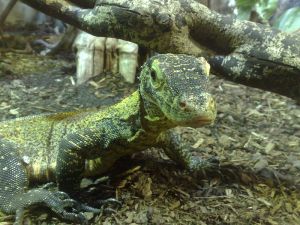Most of this entry is exactly a year old today and it’s just sat around in draft form all that time. Since I posted something similar on Geek Feminism about research into women in tech and similar topics, I thought I’d get it out there.
In January 2009 a researcher named Anne Chin of Monash University Law emailed the chat list for the linux.conf.au 2009 conference asking for research subjects to be interviewed about licencing and Open Source software. There were several responses criticising her use of HTML email and Microsoft Word attachments. I’ll leave the specifics of this alone except that people should be (and probably are) aware that this is almost always an unknowing violation of community norms.
I did, though, think about making some notes on research ethics and Free Software research. A bit about my background: I am not a specialist in ethics. I’m somewhat familiar with ethics applications to work with human subjects, but not from the perspective of evaluating them. I’ve made them, and I’ve been a subject in a study that had made them.
For people who haven’t seen this process, the ethical questions arising from using human subjects in your research in general covers the question of whether the good likely to arise from the outcomes of the study outweighs the harm done to the subjects, together with issues of consent to that harm. (There are many philosophical assumptions underlying this ethical framework, I don’t intend to treat them here.) Researchers in universities, hospitals, schools and research institutes usually have to present their experimental designs to an ethics committee who will determine this question for them and approve their experiment. Researchers who work across several of these (eg, a PhD student who wants to interview schoolchildren) will need to do several ethics applications, a notable chore when the forms and guidelines aren’t standardised and occasionally directly conflict. Researchers working for private commercial entities may or may not have a similar requirement. Researchers who use animals also have to have ethical reviews, these are done by animal ethics committees, which are usually separate.
At my university, essentially any part of your research that involves measuring or recording another person’s response to a research question and using it to help answer that question needs a human ethics application.
The good/harm balance may include very serious dilemmas: is there a health risk to subjects? how will the researcher manage the conflict between maintaining subject confidentiality and research integrity and the good of her subjects or the requirements of the law if she uncovers, say, episodes of abuse or violence? But it also involves less immediately obvious and serious ethical questions. Is this study a giant waste of subjects’ time?
is considered a question of ethics by ethics committees, and is in fact the most serious problem for linguistics research, since there’s very seldom an outcome of particular interest to the subjects themselves.
The study in which I took part a few years back was towards the serious end actually: it was a study into the psychological profiles of people who have an immediate family member who had cancer as a child and involved both questionnaires and a phone interview with a psychologist. Both because the study explored memories of the illness and because the profiling included evaluating depressive episodes, suicidal ideation and so on, it came with a detailed consent form and with information about a counselling service that had been informed of the study and was prepared to work with its subjects.
In the case of the Free Software community the ethical questions are often more towards the waste of time?
end of the spectrum than the more immediately serious end. It’s important to understand that this isn’t necessarily the case though. Here are some more cutting ethical problems:
- getting findings that expose your subjects and/or their employers to intellectual property claims; or
- revealing that your subjects are breaching employment contracts in some way (generally also related to IP) and thus exposing them to job loss and possible civil action.
Getting ethics approval to carry out workplace studies can be fairly hard precisely due to problems like these. But in the rest of this post I will treat the waste of time
problem.
Firstly the basics: are your subjects going to be identifiable in your final reports or to the general public? If not, who will know who they are? Can a subject opt to have their responses removed from the study? When and how? All this should be explained at the start. (Usually if an ethics committee has been involved, there’s a consent form.) If doing a survey look into survey design, in order to construct non-leading questions and such.
Now, for specifics. Most of them arise from this principle: there are a lot of researchers working, in various ways, on the Free Software community, possibly making it a slightly over-studied group if anything. This places the onus on the individual researcher to demonstrate to the community that their project is worthwhile and that they’re going to do what they say. Thus:
- demonstrate some familiarity with the background. Depending on your research level this could mean anything from demonstrating a knowledge of existing anthropological work on Free Software (say, if the research project is for your anthropology PhD) down to at least understanding the essential concepts and core history (say, a project at high school level). This can be demonstrated by research design, eg asking sensible well-informed questions, but actually mostly requires a bigger time investment: making appearances in the community, either virtually or physically, ideally for a little time before asking the community to help you get your PhD/A-grade/pass.
- don’t get the community to design your experiment for you. Have a specific goal, more specific than
get people to write me lengthy essays about Free Software, and get ideas from that and write about them.
In the general case, the ask people incredibly vague stuff and hope they say something interesting
technique fails the waste-of-time test.
- give your results back to the community. The most common problem with the various surveys, interviews and questionnaires sent to the Free Software community is that responding to them is like shouting into a black hole. It is not unheard of, of course, to see the thesis or essay or roundup that comes out of these, but it is unusual, relative to the number of requests. Most of the time the researcher promptly disappears. Researchers should come to the Free Software community with an explanation of when and where they will make the results of the study available. They should explain the aims in advance unless this would compromise the results. (On that note: Anne Chin is giving a linux.conf.au talk this year.)

